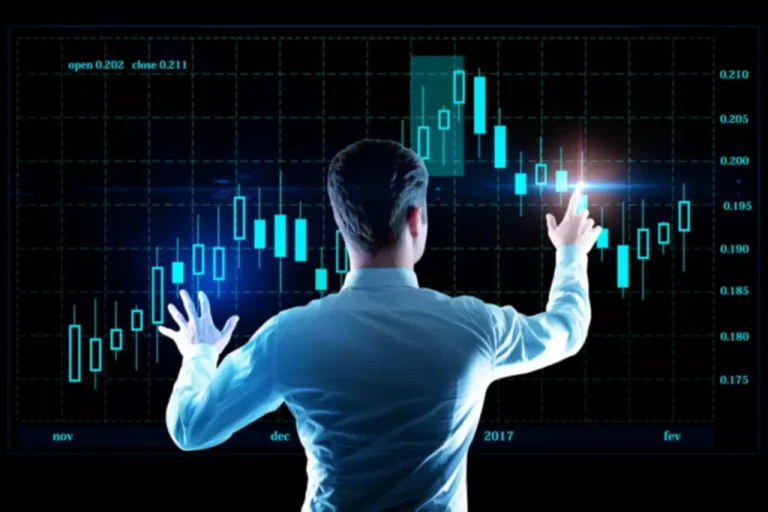Without the market makers, the inventory might be highly illiquid and merchants is not going to be too keen on buying and selling it. With the basics of market makers clear, let’s find out about virtual automated market makers (vAMMs). Market makers are entities providing liquidity in trade for a tradable asset which may be in any other case illiquid. Their trading exercise generates liquidity, thereby decreasing bigger trades’ price impact. For any funding, the primary objective of any investment is to achieve rewards or incentives, and DeFi is not any exception. In DeFi, customers deposit their crypto assets into a pool with different customers, a process generally recognized as yield farming.
The number of consumers and sellers was small in DEXs because it was a brand new know-how. Automated market makers fastened this problem of limited liquidity by creating liquidity pools. In easy phrases, liquidity swimming pools are a set of digital belongings that enable trading on decentralized exchanges (DEXs) with out intermediaries. Liquidity swimming pools provide a gradual supply of buyers and sellers, making certain that trading is executed rapidly and efficiently.
Disadvantages Of Amms
Our Goods & Services Tax course consists of tutorial videos, guides and professional help that can assist you in mastering Goods and Services Tax. Clear can also help you in getting your business registered for Goods & Services Tax Law. Akancha creates content for Finance, Fintech, SaaS, and Technology firms.

Only high-net-worth individuals or corporations could turn into liquidity providers for traditional market makers. On the opposite hand, any entity can turn into a liquidity supplier, nevertheless it must meet all the requirements coded into the sensible contract. Balancer, Uniswap, and Curve are examples of automated market makers. AMMs have made it possible for decentralized finance to exist and significantly enhance the capabilities of decentralized exchanges.
Market makers are companies that improve the liquidity and trade quantity of stocks on a given trade. However, when working as market manipulators, they must follow specific laws set by the country’s regulators to operate legally. Usually, they work in teams to subsequently deliver more buyers and sellers into the market. Market makers additionally give a sign on the danger inherent in a inventory. When market makers are not present in a inventory, it is an indication that the inventory is merely too risky and merchants can place themselves accordingly. The operation of AMMs next crucial half is a information on automated market makers described adequately.
Before learning how AMMs perform, you need to listen to two key features. Before going into virtual automated market makers (vAMMs), it is essential first to know what automated market makers (AMMs) are. This loss occurs when the value ratio of pooled crypto belongings fluctuates. The greater the market fluctuation, the upper the loss incurred. Impermanent losses normally occur in pools with volatile crypto assets. AMMs allows users to trade on the DEX protocol without account verification, but they must have a crypto wallet.
Institutional Market Makers
Dynamic automated market makers can become extra robust market makers by adapting to altering crypto market conditions. They concentrate liquidity near the market price and increase capital efficiency during periods of low volatility. They expand during periods of excessive volatility to protect crypto traders from impairment losses. It is because of the presence of market makers that the volumes in a stock are created.

These progressive models will lower fees and supply better liquidity for crypto merchants. Crypto trades occur instantly between consumer wallets on a decentralized trade. These transactions are also referred to as peer-to-peer (P2P) transactions. As a liquidity supplier, the rewards are in the type of trading fees and yield farming rewards.
Execs And Cons Of Automated Market Makers
The presence of market makers makes stock trading safer and more secure. They create volumes in shares and maintain the markets from becoming illiquid. The two-way quotes offered by them scale back the basis danger and buying and selling risk for market players. To keep the market risk lower, they cut back market volatility and provide liquidity. BSE and MCX-SX (now MSEI) have even incentivized market maker providers. Automated market makers operate similarly to an order book exchange in that there are buying and selling pairs.

While some are official market makers, there are others who provide liquidity as part of their enterprise. Just as traders commerce for revenue, market makers help to make markets by giving liquidity and incomes small spreads. Uniswap, Balancer, and Curve are the three dominant AMM models at present. Uniswap allows users to create a liquidity pool with a 50/50 ratio and has become the most popular AMM model on the Ethereum community. Balancer checks the bounds of Uniswap by enabling users to create dynamic liquidity pools of as much as eight completely different crypto property in any ratio. Curve focuses on creating liquidity pools of comparable crypto belongings, corresponding to stablecoins.
Clever Funding Insights Delivered To Your Inbox, For Free, Daily!
To make a deal in the AMM protocol, you don’t require one other trader. As a end result, trades are peer-to-contract somewhat than peer-to-peer. As previously acknowledged, a mathematical method determines the worth you obtain for an item you wish to purchase or sell.
A vAMM is not used for spot buying and selling however for value discovery in handling leverage. The vAMM calculates the exit or entry price each time one makes a commerce. This calculation takes place the same way as worth calculation happens on AMM-style exchanges. The first-generation vAMMs made use of a set method to calculate prices. But the second-generation vAMMs use a robust liquidity design and digital tokens to allow makers to offer liquidity with leverage. AMMs are monetary instruments unique to decentralized finance (DeFi).
By turning into a Liquidity Provider or LP, you’ll have the ability to earn further income in your crypto belongings while nonetheless holding them. It’s a simple process of depositing your assets into a pool with other customers, and then incomes a portion of the fees generated from buying and selling activities. Additionally, you can commerce your belongings with other LPs on a DEX and obtain amms meaning liquidity pool tokens representing your share of property. To discern the most becoming liquidity swimming pools, users must undertake a comprehensive analysis considering the assorted use cases they serve. Let’s take the example of Uniswap, which is a decentralized change. Since it operates on open source, It permits users to create new liquidity swimming pools for any token without charging any fees.
One instance of a trading pair is ETH/USDT, the place ETH (Ethereum) and USDT (Tether) are two different tokens that might be traded in opposition to one another. In this case, a trader could purchase ETH with USDT or sell ETH for USDT, depending on their trading technique and market circumstances. Liquidity is essential for the functioning of the financial system, serving as its lifeblood. It refers to an asset’s ability to be rapidly bought or exchanged for one more asset without significantly affecting its worth. Financial systems can come to a standstill when funds are not readily available.




More Stories
Otc Trading Trading Digital Property